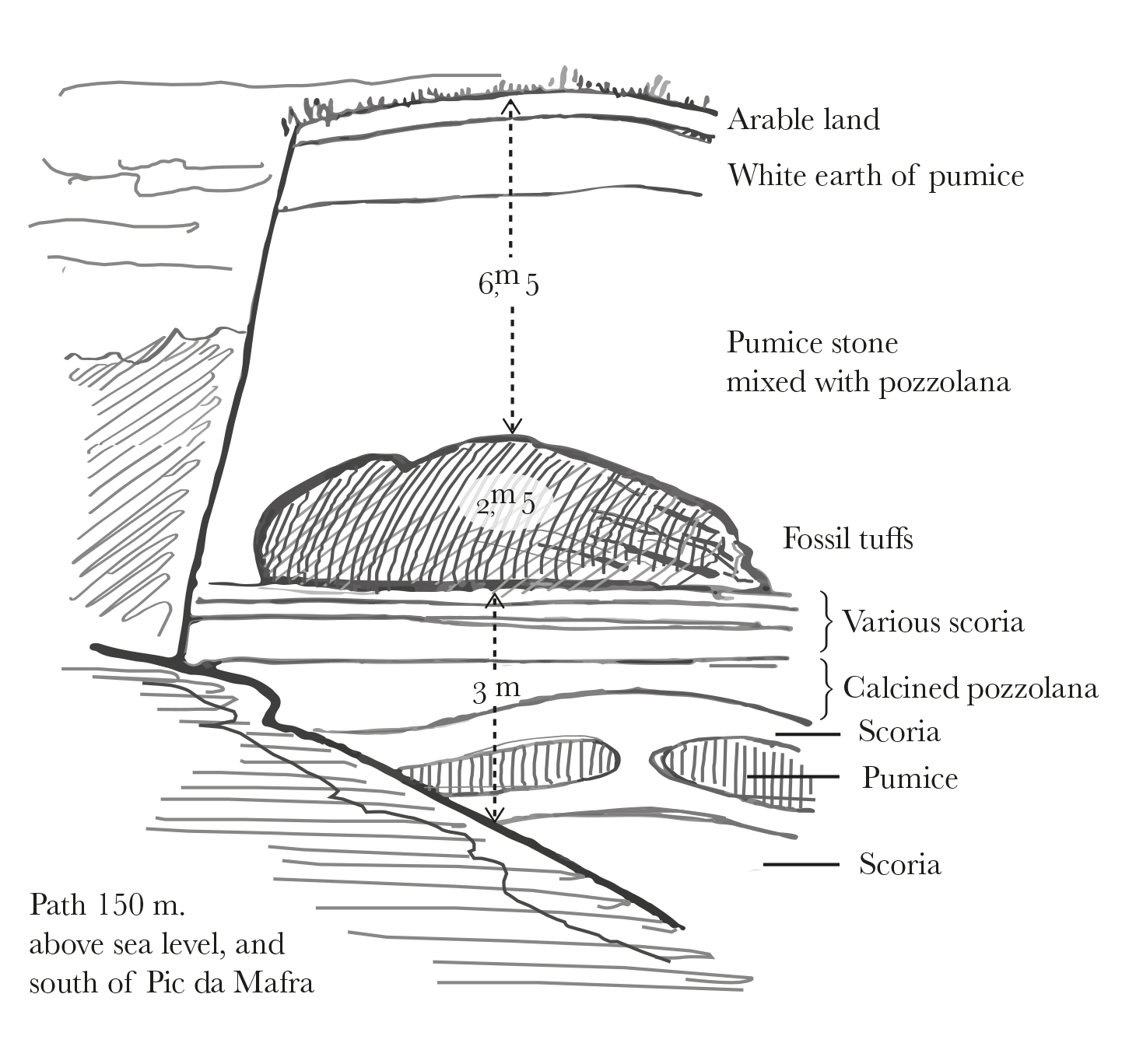From Francisco de Arruda Furtado1 21 November 1881
Ile St. Michel (Açores)
21 Nov. 1881
Mr. Charles Darwin
Monsieur
Je me hâte de vous remercier la bienveillance avec laquelle vous avez accueilli ma petite découverte, et je suis très heureux d’apprendre que vous lui accordez une certaine valeur, en la jugeant digne d’être publiée.2
Maintenant je dois vous faire une histoire plus complète du fait. Les statuettes où l’insecte a déposé ses trois boites d’œufs étaient placées dans l’armoire vitrée d’une salle à manger. Elles ont été fabriquées à Paris avec une sorte de craie verdâtre et, faisant l’ornamentation de l’armoire il y a bon nombre d’années, on ne les a jamais enduit d’aucune peinture. Du reste, je suis parfaitement sûr que les œufs ont été déposés par l’insecte dans les 8 jours avant la découverte que j’en ai faite; avant ce temps là les statuettes étaient parfaitement netoyées quand on les a essuyé de la poussière.
Prochainement je me ferais l’honneur de communiquer a Sir J. Hooker3 les documents d’un fait important de botanique açoréenne. Il s’agit de nombreux exemplaires de belles empreintes de feuilles de Hedera, Persea et (Viburnum?) trouvées, dans un tuf, à Mosteiros sur la pointe N. O. de St. Michel.4 Je n’ai point trouvé aucun autre vestige fossile. J’avais l’espoir d’y trouver quelques graines ou quelques coquilles terr.; mais mes recherches ont été infructueuses. Le tuf et les couches supérieures, livrant passage à l’eau, l’humidité a tout pourri. Je ferais accompagner les empreintes d’un profil géologique du site, illustré de spécimens des différentes couches. Peut être ce sont là des effets de l’éruption de 7 cidades.5 Je prends la liberté de vous adresser un exemplaire de ces empreintes et quelques graines apportées sur nos plages par le gulf stream, de celles dont je vous ai parlé dans une précédente lettre.6 Une de ces graines à été jadis la tabatière d’un pêcheur.7 Peut-être cette application est-elle particulière aux açoreennes; ils ne s’en servent que pour le tabac en poudre sèche, et, quand il veulent en prendre une prise, ils secouent la graine sur le dos de la portion metacarpienne du pouce (point commode où il n’y l’odeur de poisson!) et ils y appliquent avidement la narine.
Daignez agréer, Monsieur, la nouvelle assurance de mon humble et éternelle reconnaissance | Arruda Furtado.
P.S. | Voici, Monsieur, un petit croquis du profil à empreintes:—8

CD annotations
Footnotes
Bibliography
Góis Marques, Carlos A. and Menezes de Sequeira, Miguel. 2015. Darwin, Hooker and Arruda Furtado and the palaeobotany of Azores: rediscovering the first collections. Review of Palaeobotany and Palynology 221: 47–51.
Moore, Richard B. 1990. Volcanic geology and eruption frequency, São Miguel, Azores. Bulletin of Volcanology 52: 602–14.
Translation
From Francisco de Arruda Furtado1 21 November 1881
São Miguel island (Azores)
21 Nov. 1881
Mr. Charles Darwin
Sir
I hasten to thank you for the kindness with which you have received my little discovery, and I am very happy to learn that you attribute some value to it, in judging it worthy of being published.2
Now I must tell you a more complete history of the matter. The statuettes where the insect deposited its three cases of eggs had been placed in a glass cabinet in the dining room. They were made in Paris with a sort of greenish chalk and, forming the decoration of the cupboard for a good number of years, were never coated with any paint. Morever, I am absolutely sure that the eggs were deposited by the insect in the 8 days before the discovery that I made; before that time the statuettes were perfectly cleaned when we wiped them of dust.
Shortly I will have the honour to communicate to Sir J. Hooker3 documents on an important fact of Azorean botany. It concerns numerous examples of good impressions of leaves of Hedera, Persea and (Viburnum?) found in tuff at Mosteiros on the N.E. point of São Miguel.4 I have found no other fossil remains at all. I had hoped to find some seeds or terr. shells; but my searches have been unfruitful. The tuff and the higher strata allowing water to pass through, the moisture has decomposed everything. I will supplement the impressions with a geological profile of the site, illustrated with specimens from different strata. Perhaps these are the effects of the eruption of 7 Cidades.5 I take the liberty of sending you a specimen of these impressions and some seeds brought to our beaches by the gulf stream, about which I spoke to you in a previous letter.6 One of these seeds was once the snuffbox of a fisherman.7 Perhaps this use is unique to Azoreans; they use them only for powdered tobacco, and, when they wish to take a dose, they shake a grain on the back of the metacarpal part of the thumb (a convenient point where there is no smell of fish!) and they apply it eagerly to the nostril.
Please accept, Sir, renewed assurance of my humble and everlasting gratitude | Arruda Furtado.
P.S. | Here, Sir, a little sketch of the topographic profile:—8

Footnotes
Bibliography
Góis Marques, Carlos A. and Menezes de Sequeira, Miguel. 2015. Darwin, Hooker and Arruda Furtado and the palaeobotany of Azores: rediscovering the first collections. Review of Palaeobotany and Palynology 221: 47–51.
Moore, Richard B. 1990. Volcanic geology and eruption frequency, São Miguel, Azores. Bulletin of Volcanology 52: 602–14.
Summary
The statues on which the egg-cases were found were perfectly clean and had never been painted.
Reports on fossilised leaf-prints he has found on the island. Found no seeds or land shells at the site.
Letter details
- Letter no.
- DCP-LETT-13500
- From
- Francisco de Arruda Furtado
- To
- Charles Robert Darwin
- Sent from
- Ile St Michel Azores
- Source of text
- Royal Botanic Gardens, Kew (Directors’ Correspondence 181/39)
Please cite as
Darwin Correspondence Project, “Letter no. 13500,” accessed on 19 April 2024, https://www.darwinproject.ac.uk/letter/?docId=letters/DCP-LETT-13500.xml


